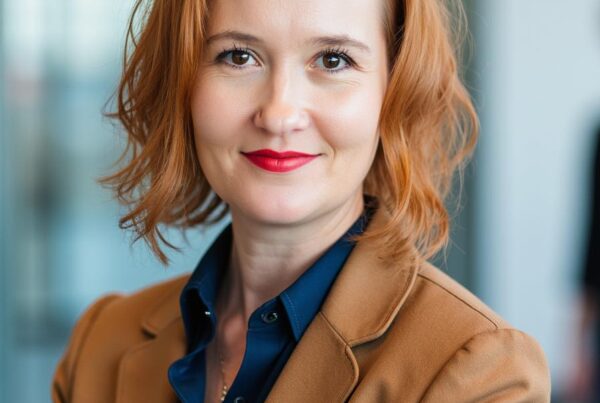Changing Higher Education for Good
Steve Jobs once said: “You can’t connect the dots looking forward, you can only connect them looking backwards.” Looking back, 2020/21 was a time of dramatic shift in universities. International student income had propelled research growth, raising our performance in global rankings. We assumed enrolments would continue to fund university research.
Looking back shows herculean efforts by staff and leaders to cope and maintain hope. It was a period of unprecedented challenge to the delivery, structure and purpose of higher education. Eighteen months later, we can pause, look back, and consider what leaders are doing to get us back on track to a viable future.

The way people work and are led, following the 2020/21 pandemic will be changed for good. A word cloud analysis generated from all transcripts in the HEDx podcast series. Representative image distilled from strategic conversations with leaders, employers, students, commentators, and providers to universities. We conducted 36 interviews with representative stakeholders from all sector constituencies. The 20 hours of interviews were listened to 10,000 times, and the 35,000 words of analysis generated were seen on more than 75,000 occasions.
Thematic analysis identified clusters of keywords regarding pressing issues driving the sector, now and into the future. The emergent keywords were clustered into 5 groups. They identify leaders’ priorities, a change agenda, and themes for the future.
- The sector and its context: policy, funding, opportunity and growth.
- University strategy: purpose, differentiation, innovation, disruption, business models, reputation and brand.
- University leadership, staff and culture: equity, staff engagement, academic work and governance.
- Our future learners and how they learn: skills, job ready graduates, future of work, lifelong learning, employers, entrepreneurs, pedagogy, online education, student experience and satisfaction, online markets, hybrid learning and campuses.
- Research and external engagement: research partnerships, research commercialisation, industry and community engagement.
1. The Sector and its Content: Accepting these are turbulent times
John Dewar gave a sobering assessment of the impact of the pandemic and paid tribute to staff in all of our institutions.
Professor John Dewar, Chair of Universities Australia and VC of La Trobe University – “Everybody is facing a significant financial challenge for 3-4 years or longer. We need to be clear about what value we offer, as Australian universities, teaching online, globally.”
Commentator and policy analyst Andrew Norton saw long-term impact on finances and how policy settings call for substantial reset in all institutions in response. Sandra Harding, as the longest serving VC at a single university, saw renewal.
Professor Sandra Harding, VC of James Cook University – “Wisdom is taking a step back and embracing, owning and getting real about where we are now. Foolishness is hoping we can go back. Renewal and transformation is possible.”
2. University strategy: New business models arise through innovation
Pascale Quester, newly in her role, foreshadowed a strategy of a path less travelled with universal WIL opportunities and linking the arts and social sciences with technology.
Professor Pascale Quester, VC of Swinburne University of Technology – “We’re going to get out of the peloton and let all the others cycle madly to be bigger and richer. We will take the road that leads to a different destination, building human capital as a co-creation exercise with partners.”
Margaret Sheil outlined how QUT was reinterpreting a position in the context of a changed real world with staff culture and morale being rebuilt through the change experienced.
Professor Margaret Sheil, VC of QUT – “We’ve taken sufficient costs out and now we’re rebuilding structures, morale and culture. At the same time, we’re looking at our strategy going forward.”
The most significantly differentiated strategy came from Torrens University, as a private institution that has achieved balanced markets of rapidly growing domestic and international students across the nation in combinations of online and campus settings.
Professor Alwyn Louw, VC of Torrens University Australia – “We grew from 164 students in 2014 in Adelaide to now more than 19,000. Through continuous innovation it is possible to have a dynamic higher education environment.”
3. University leadership, staff and culture: Leading differently to suit needs of the times
Significant issues of leadership and culture were addressed by Marcia Devlin and Lynn Bosetti in describing the challenging issues of gender equity and academic bullying respectively. And as a leading former VC of both Deakin and UWA, Jane den Hollander painted a picture of the value and contribution of staff who she saw as having saved the day for our institutions. They did so with the speed and commitment of their response. She likened them to the gold at the base of the pyramid. Others saw the need to lead people differently.
Professor Patricia Davidson, VC of University of Wollongong – “The university system in Australia has been decimated. Now is the time to be asking questions and understanding where people are at.”
4. Our future learners and how they learn: Equity of access through new learning models
With regard to future learners, and how they learn, Jan Owen saw the need to focus on the changing nature of the future of work and of young Australians.
Jan Owen, Former CEO, Foundation for Young Australians – “The university that reaches out to business to help solve real problems and ensures that every single young person has a touchpoint, will be genuinely student-centred.”
David Kellermann saw that innovation will let technology be harnessed in hybrid learning to overcome accessibility challenges to suit the needs of diverse learners.
Dr David Kellermann, Senior Lecturer in Engineering, UNSW – “I don’t think that universities did much more than survive in 2020, and I’m still not really seeing or hearing any substantial changes in the higher education sector to adapt to what is coming, which is hybrid education. I believe we’re in for a huge disruption. The future of higher education platforms is going to be big tech.”
5. Research and external engagement: Partnerships and engagement will fund research.
Themes of industry partnerships were outlined by Alex Subic and Guy Littlefair of RMIT and AUT respectively, who also saw their importance to future learning and learners as our priorities became job ready graduates. The increasing focus on local and community partnerships were highlighted by Sandra Harding, Helen Bartlett, Geraldine Mackenzie, Barney Glover and Duncan Bentley as VCs at JCU, USC, USQ, WSU and Federation. Finding a distinctive place in the way communities have changed is clearly a theme for the sector.
Professor Guy Littlefair, PVC at Auckland University of Technology – “Universities struggle to understand who the customer is. Is it a student, government, employers? Or is it society or the communities we serve? Not understanding who your customer is, causes problems to business development, relevance, and ultimately accountability.”
What does this analysis within our five themes tell us with regard to the key questions of where we are, where we are heading and how we will get there?
Where are we?
Our sector has changed irrevocably in terms of the policies driving funding and the financial basis of our institutions. Yet there are growth opportunities for new learner types. Our institutions need a fundamental review of their purpose, mission and strategy. We need new business models that either draw on current reputations and brand positions or create opportunities for new reputations and approaches to the market to emerge.
Matthew Kuperholz, Chief Data Scientist PWC – “Having been to a sandstone university, I question the value of prestige when there are so many alternatives now for a high quality education, especially for a curious learner.”
Culture in our institutions is undergoing more scrutiny and focus than ever and significant new equity challenges are emerging that call for new responses. These call for different approaches to staff engagement. They heighten the need for empathetic and compassionate approaches to leadership.
Our universities are more corporatised than international competitors and our leaders need to become even more like business managers. The way they lead change, transformation, technology and new business models is under scrutiny. It is clashing with underlying academic culture and convention, and outdated governance models.
The needs of learners, and how they learn, are transformed. But institutions are struggling to keep up with change in learning needs and expectations. Markets for online, offshore and lifelong learning are only beginning to be understood by a sector clinging to models from the past.
Our future research is the most uncertain part of our range of activities. While the value of research was demonstrated more clearly than ever before, in overcoming a pandemic, our means of funding it remains unresolved. We see external engagement with partners, industry and communities as a pressing priority for research, and our learning and learners. But models for funding and operating partnerships are immature, and go beyond commercialisation.

Where are we heading?
Our leaders are justifying to staff and councils that they are doing enough to manage change and ensure short-term survival. There is a sense that the sector is aiming to buy time to work out what to do, and asking government for help. The prospect appears slim.
We are heading for significant change in models of funding, learning, engaging and partnering. It will call for changes in strategy, culture, how we engage staff, students and partners, and do research. It will lead to different ways in which reputations will be built. It will be a real and lasting threat to many, but a great opportunity to many more.
Professor Duncan Bentley, VC at Federation University – “Coming out of COVID with relentless innovation and reinvention, our refresh strategy is to enable us to power our way out of a period which many of us would rather forget.”
How do we get there?
Such a radical destination for the sector, leaders, staff, students and institutions calls for new paradigms of leadership and academic work. We need empathetic entrepreneurs that engage in partnerships utilising new ways of working, pursuing business models fit for the future. It is a game changer for the pecking orders of institutions and a genuine disruptor of learning approaches and program offerings enabled by breakthrough technologies and new models of learning requiring new pricing models.
Sarah, Student at Monash University – “We pay $8500 for our course, but once it all went online me and my fellow students question what did my money go to? A real dampener for students is the finances.”
And it is a seismic disruption in how we will live, work, learn, research and engage with each other that will create change and opportunity for those that embrace it. This will apply to every student, staff member and institution. And it will have great and lasting impact on what it means to be a leader in higher education.
What has changed about leadership, and what do we now need in our leaders?
These changes call for new forms, styles, qualities and approaches to university leadership. The future leader will lead innovation and transformation, have an entrepreneurial mindset, and be a great communicator. It will be as leaders of people that they will most successfully be technology and business model strategists, and facilitators of external partnerships.
They will take different paths to become our leaders than the conventional route through academic hierarchies. And they will need to surround themselves with skills and teams to ensure the culture and leadership team embraces all five new priorities for the path ahead. This includes edtech and other partnerships, specialist input, and facilitation of internal innovation activities across these five priorities. This will be vital as a means of staying in touch with an increasingly fast-changing sector and retaining a competitive position.
Professor Lynn Bosetti, Professor of Higher Education UBC Canada – “There is enormous pressure on university leaders communicating what the current plan is and, what the future will be, showing up seeking to provide stability in this unstable world.”
Higher education is changing for good. It is about to embrace transformed experiences for staff, students and partners through leaders who make the choice, to take the chance to change the higher education world. For a sector that has such purpose in changing people’s lives, it will need great people leaders to make it happen.
First published in Campus Review on 5th October 2021









